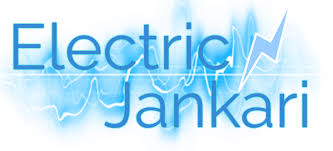When you invest in college education, you’re not just investing your money and time. You’re investing in your future. With college costs soaring, the return on investment (ROI) from a college degree is now scrutinized more than ever. It’s about finding a college that won’t just educate you, but will also set you up for financial success.
Sadly, not all colleges provide their students with solid ground for their career paths. The unfortunate reality is that some institutions, despite receiving federal aid, still report dismal student outcomes. This has caught the eye of education advocates who call for better accountability and stricter regulations from the U.S. Department of Education.
The education department handles approximately $150 billion each year in student aid for higher education. Critics argue that without a strict scrutiny, schools underperforming may not feel the pressure to enhance their service delivery. Despite these critiques, research into colleges’ ROI has been done, but with little change observed.
However, there’s a bright side. Generally, attending a U.S. college is beneficial long-term. The Bipartisan Policy Center (BPC) indicates that a college degree is a worthwhile investment, with the potential to boost lifetime earnings by an impressive $1.2 million.
Choosing the right college is therefore instrumental. To increase success chances, it’s essential to evaluate all the data available meticulously.
पोस्ट में ये जानकारी है -
Which Colleges Have The Highest Return On Investment?
The answer varies. It depends on numerous factors, which require a deeper analysis. Let’s start these analyses:
Delving into the Bipartisan Policy Center Report
To guide policymakers in evaluating higher education institutions more accurately, the BPC report took labor market discrimination into account. Institutions with more diverse enrolments might be penalized unfairly due to existing wage gaps affecting underrepresented demographics and women.
Adjustments in ROI Calculator
The BPC’s analysis and adjustments include:
- Demographic Adjustments: Since earnings data are not uniformly inflated across graduates due to gender and race inequalities, ROI needs adjustments.
- Government Subsidy Adjustments: Taking into account government subsidies to understand the true cost and benefit of attendance.
Using these modifications, historically Black colleges, for example, showed much higher positive median ROI than when these adjustments weren’t made.
Identifying Negative ROI Institutions
Surprisingly, some colleges, including non-profit, for-profit, and public vocational schools, presented a negative ROI. Attending these might not offer better earnings than someone without a college degree.
Finding Schools With the Highest ROI
The BPC also offers a “College ROI Calculator” to help estimate the potential earnings from U.S. post secondary education institutions. Consider the following outputs from the calculator:
- Baseline Model: Estimates the total ROI, considering estimated lifetime earnings minus the net attendance cost.
- Intermediate Model: Adjusts the baseline for opportunity costs.
- Full Model: Makes further adjustments in the baseline model to include benefits and costs, government funding, and demographic corrections.
Examples of Institutional ROI
Alabama State University (Public):
- Baseline ROI: $160,673
- Full Model Adjusted ROI: $111,452
Anna Maria College (Private):
- Baseline ROI: $442,697
- Full Model Adjusted ROI: $91,935
California State University-Bakersfield (Public):
- Baseline ROI: $751,408
- Full Model Adjusted ROI: $316,964
Such analyses reveal the stark differences when comprehensive data is taken into consideration.
Key Takeaways
Your choice of college is crucial, as the ROI can significantly vary. It’s not just about the baseline figures but a more profound interpretation adjusted for various socio-economic factors.
Before making a decision, weigh the full model numbers, which reflect a truer picture of what your college investment might yield. Choosing wisely could mean the difference between a solid financial future and years spent outpacing debts with little gain.
In the end, a college’s return on investment isn’t just a number—it’s a starting point for evaluating the true value of an education against the backdrop of your personal and professional ambitions.
